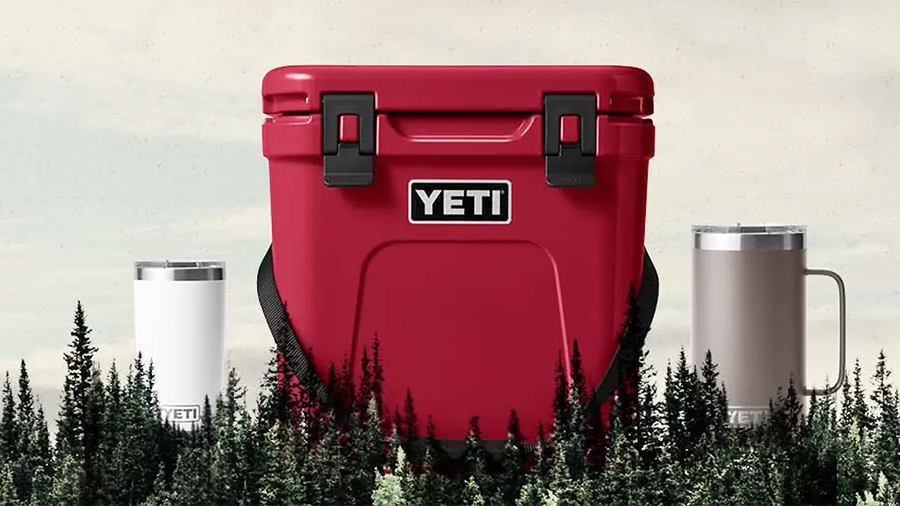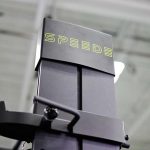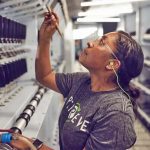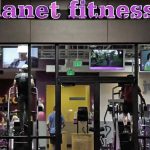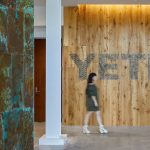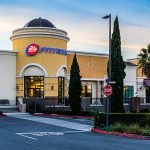Yeti Holdings, Inc. slightly raised its guidance for the year after reporting third-quarter results that topped Wall Street analysts’ targets. Sales grew 23 percent in the quarter on top of 29 percent growth in the 2019 quarter.
Matt Reintjes, president and chief executive officer, commented, “Yeti’s third-quarter results continue to reflect robust demand for our brand. We delivered net sales growth of 23 percent on top of an exceptional 29 percent growth in the prior year’s period, powered by our innovative product portfolio with balanced performance across our channels and categories. Profitability remained strong amidst accelerating and wide-spread inflationary pressures, supporting better-than-expected earnings per share growth for the period.”
Reintjes concluded, “We are focused on building on the strong momentum in our business through the holidays and well into the future. While we are not immune to the confluence of supply chain disruptions and cost pressures that are pervasive in the market, our team’s ongoing execution has supported our ability to once again raise both our top and bottom line outlooks for the year. As we continue to move forward in this challenging environment, we remain highly committed to both actions and continued investments that will position Yeti for both near- and long-term sustainable growth.”
For The Three Months Ended October 2, 2021
- Net sales increased 23 percent to $362.6 million, compared to $294.6 million during the same period last year.
- Direct-to-consumer (“DTC”) channel net sales increased 31 percent to $197.1 million, compared to $150.4 million in the prior-year quarter, driven by strong performance in both Drinkware and Coolers & Equipment. The DTC channel grew to 54 percent of net sales, compared to 51 percent in the prior-year period.
- Wholesale channel net sales increased 15 percent to $165.5 million, compared to $144.2 million in the same period last year, driven by both Drinkware and Coolers & Equipment.
- Drinkware net sales increased 24 percent to $205.0 million, compared to $165.9 million in the prior-year quarter, primarily driven by the continued expansion of its Drinkware product offerings, including the introduction of new colorways and sizes, and strong demand for customization.
- Coolers & Equipment net sales increased 20 percent to $149.0 million, compared to $124.2 million in the same period last year, driven by strong performance in bags, outdoor living products, soft coolers, and hard coolers.
- Gross profit increased 19 percent to $207.0 million, or 57.1 percent of net sales, compared to $174.0 million, or 59.1 percent of net sales, in the third quarter of 2020. The 200 basis point decrease in gross margin was primarily driven by higher inbound freight rates and the unfavorable impact of the non-renewal of the Global System of Preferences (“GSP”) program on import duties, partially offset by product cost improvements and all other impacts.
- Selling, general, and administrative (“SG&A”) expenses increased 33 percent to $138.3 million, compared to $103.9 million in the third quarter of 2020. The 2020 period included the benefit of cost reduction initiatives implemented in response to the uncertainties of COVID-19. As a percentage of net sales, SG&A expenses increased 280 basis points to 38.1 percent from 35.3 percent in the prior-year period, primarily driven by higher marketing expenses.
- Operating income decreased 2 percent to $68.7 million, or 19.0 percent of net sales, compared to $70.1 million, or 23.8 percent of net sales, during the prior-year quarter due to the aforementioned lower spending levels in 2020.
- Adjusted operating income increased 3 percent to $74.2 million, or 20.5 percent of net sales, compared to $72.4 million, or 24.6 percent of net sales, during the same period last year due to the aforementioned lower spending levels in 2020.
- Net income increased 3 percent to $53.0 million, or 14.6 percent of net sales, compared to $51.4 million, or 17.5 percent of net sales, in the prior-year quarter.
- Net income per diluted share increased 3 percent to $0.60, compared to $0.58 per diluted share in the prior-year quarter.
- Adjusted net income increased 7 percent to $57.1 million, or 15.7 percent of net sales, compared to $53.5 million, or 18.2 percent of net sales, in the prior-year quarter; Adjusted net income per diluted share increased 5 percent to $0.64, compared to $0.61 per diluted share in the prior-year quarter.
Sales of $362.6 million were ahead of Wall Street’s consensus estimate of $358 million. Adjusted earnings of 64 cents per share topped the consensus estimate of 60 cents.
For The Nine Months Ended October 2, 2021
- Net sales increased 35 percent to $967.9 million, compared to $716.0 million in the prior year.
- DTC channel net sales increased 43 percent to $520.8 million, compared to $363.1 million in the prior-year period, driven by both Drinkware and Coolers & Equipment. The DTC channel grew to 54 percent of net sales, compared to 51 percent in the prior year.
- Wholesale channel net sales increased 27 percent to $447.1 million, compared to $352.9 million in the same period last year, primarily driven by both Drinkware and Coolers & Equipment. In the second quarter of 2020, wholesale channel net sales were adversely impacted by the temporary store closures due to COVID-19.
- Drinkware net sales increased 39 percent to $546.8 million, compared to $392.9 million in the prior-year period, due to the continued expansion of its Drinkware product offerings, including the introduction of new colorways and sizes, and strong demand for customization.
- Coolers & Equipment net sales increased 28 percent to $400.3 million, compared to $312.3 million in the same period last year. The strong performance was driven by growth in bags, outdoor living products, soft coolers, hard coolers, and cargo.
- Gross profit increased 39 percent to $561.3 million, or 58.0 percent of net sales, compared to $404.0 million, or 56.4 percent of net sales, in the prior year. The 160 basis point increase in gross margin was primarily driven by product cost improvements as well as a favorable mix shift to its DTC channel and lower inventory reserves, partially offset by the unfavorable impact of the non-renewal of the GSP program on import duties and higher inbound freight rates.
- Selling, general, and administrative expenses increased 40 percent to $380.1 million, compared to $271.2 million in the prior year. The 2020 period included the benefit of cost reduction initiatives implemented in response to COVID-19. As a percentage of net sales, SG&A expenses increased 140 basis points to 39.3 percent from 37.9 percent in the prior-year period. This increase was due to an increase of 10 basis points in variable expenses, driven by the increased mix of our faster growing and higher gross margin DTC channel, which grew to 54 percent of net sales during the period, and an increase of 130 basis points primarily driven by higher marketing expense.
- Operating income increased 36 percent to $181.2 million, or 18.7 percent of net sales, compared to $132.8 million, or 18.5 percent of net sales, during the prior year.
- Adjusted operating income increased 40 percent to $195.4 million, or 20.2 percent of net sales, compared to $139.8 million, or 19.5 percent of net sales, during the same period last year.
- Net income increased 50 percent to $139.7 million, or 14.4 percent of net sales, compared to $93.4 million, or 13.0 percent of net sales, in the prior year; Net income per diluted share increased 48 percent to $1.58, compared to $1.07 per diluted share in the prior year.
- Adjusted net income increased 52 percent to $150.4 million, or 15.5 percent of net sales, compared to $99.0 million, or 13.8 percent of net sales in the prior-year period; Adjusted net income per diluted share increased 50 percent to $1.70, compared to $1.13 per diluted share in the same period last year.
Balance Sheet and Cash Flow Highlights
- Cash increased to $259.3 million, compared to $234.8 million at the end of the third quarter of 2020.
- Inventory increased 98 percent to $266.0 million, compared to $134.6 million at the end of the prior-year quarter, primarily due to the inventory purchase order reductions taken during 2020 in response to COVID-19 and higher in-transit inventories this year due to extended lead times from ongoing supply chain disruptions. The inventory increase represents a CAGR of 13 percent since the same period in 2019, which is below its net sales CAGR of 26 percent during the same period.
- Total debt, excluding finance leases and unamortized deferred financing fees, was $118.1 million, compared to $238.8 million at the end of the third quarter of 2020. During the first nine months of 2021, Yeti made mandatory debt payments of $16.9 million. At the end of the third quarter of 2021, its cash balance exceeded the total debt by $141.2 million.
Updated 2021 Outlook
For Fiscal 2021, a 52-week period, compared to a 53-week period in Fiscal 2020:
- Net sales are now expected to increase between 28 percent and 29 percent (versus the previous outlook of between 26 percent and 28 percent);
- Operating income as a percentage of net sales is expected to be approximately 19.5 percent (versus the previous outlook of approximately 19 percent);
- Adjusted operating income as a percentage of net sales is expected to be approximately 20.8 percent (versus the previous outlook of approximately 20.5 percent);
- The effective tax rate is now expected to be approximately 22 percent (versus the previous outlook of approximately 23 percent);
- Net income per diluted share is now expected to be between $2.35 and $2.37 (versus the previous outlook of between $2.25 and $2.29), reflecting a 33 percent to 34 percent increase;
- Adjusted net income per diluted share is now expected to be between $2.51 and $2.53 (versus the previous outlook of between $2.42 and $2.46), reflecting a 34 percent to 35 percent increase;
- Diluted weighted average shares outstanding is now expected to be approximately 88.7 million (versus the previous outlook of 88.6 million); and
- Capital expenditures are expected to remain between $55 million and $60 million, primarily to support investments in technology and new product innovation and launches.
Photo courtesy Yeti

